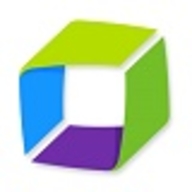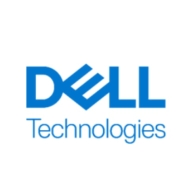

Dynatrace and Moogsoft compete in the IT monitoring and management category. Dynatrace seems to have the upper hand due to its comprehensive feature set and deep diagnostics capabilities.
Features: Dynatrace uses PurePath technology for deep diagnostics and offers flexibility in monitoring with both agent-based and agentless options. It includes features like dynamic customized dashboards and a user-friendly UI. Moogsoft focuses on noise reduction and event correlation through AI, turning multiple alarms into a unified incident and providing seamless integration with multiple IT tools.
Room for Improvement: Dynatrace faces challenges with its pricing and licensing, which can be overwhelming for startups, and it needs better integration with legacy systems. Improving scalability in cloud-native environments and enhancing dashboards are also reported as areas for improvement. Moogsoft is critiqued for its dependency on open-source technologies and limited integration capabilities, and users seek a unified dashboard and enhanced analytics features.
Ease of Deployment and Customer Service: Dynatrace supports diverse environments like On-premises, Public Cloud, and Hybrid Cloud, offering detailed technical support and user-friendly experience. However, it can be complex and costly, requiring training and setup investment. Moogsoft offers flexible cloud deployment and gets positive feedback for intuitive deployment, though complexity in integration can be a challenge. Dynatrace is known for superior support, while Moogsoft prioritizes quick customer needs fulfillment.
Pricing and ROI: Dynatrace is recognized for its higher costs justified by robust features and high ROI through reduced troubleshooting and tool consolidation, considered cost-effective mainly for larger enterprises. Conversely, Moogsoft is noted for being cost-effective in the AI ops space, offering competitive pricing compared to tools like Splunk, praised for its affordability and enterprise-level impact.


Dynatrace is an AI-powered software intelligence monitoring platform that accelerates digital transformation and simplifies cloud complexities. Dynatrace is an entirely automated full-stack solution that provides data and answers about the performance of your applications and deep insight into every transaction throughout every application, including the end-user experience. By modernizing and automating enterprise cloud operations, users can deliver an optimal digital experience with higher quality software to customers faster.
Dynatrace offers an all-in-one automated artificial intelligence solution that brings together application performance, cloud and infrastructure, and digital experience monitoring. Dynatrace accelerates performance-driven results through operations, development, and business teams with a shared metrics platform. In addition, users are provided a full-stack monitoring experience with three patented technologies:
What does Dynatrace offer?
Dynatrace redefines how organizations monitor their digital ecosystems. The solution offers:
Reviews from Real Users
Dynatrace is the only solution that provides answers to organizations based on deep insight into each user, transaction, and organization's environment.
Barry P., a managing performance engineer at Medica Health Plans, writes, "With Dynatrace, we have synthetic checks and real-user monitoring of all of our websites, places where members and providers can interact with us over the web. We monitor the response times of those with Dynatrace, and it's all integrated into one place."
A consultant at a tech service company notes, "A feature that's one of the highlights of Dynatrace is the AI. The second most valuable feature is OneAgent. Between infrastructures, applications, operating systems, you can deploy with just a single agent and can practically install and forget about it."
Moogsoft is an AI-based solution that ensures continuous availability and prevents downtime by utilizing machine learning and advanced correlation on your organization’s stack. Moogsoft detects incidents before they can escalate, notifies the proper response teams, and applies machine learning in order to understand patterns to help prevent similar issues in the future.
Moogsoft sits on top of an organization’s production stack and extends across automation, service management, log indexing, and notification tools. Algorithmic Noise Reduction automatically reduces event volumes to unique alerts without relying on rules, filters, or models. This enables teams to analyze all monitoring ecosystem events with no noise and no blind spots.
With Moogsoft extensive integration options, users can aggregate all their observable data into a single location and create automated workflows to detect and remediate incidents in third-party systems, ensuring their system remains unharmed. Moogsoft’s anomaly detection tools detect incidents as they emerge, allowing security teams to respond swiftly before they impact customers.
Teams can easily set up their own integrations using Moogsoft’s REST API and webhook. The solution provides guidance for each step, allowing users to import data from whatever tool they need with just a few mouse clicks.
Some of Moogsoft’s top features and benefits include:
Reviews from Real Users
Moogsoft stands out among its competitors for a number of reasons. A few major ones are its monitoring tools, its user-friendly interface, and its strong AI capabilities.
Vivek S., an O&M Lead at a communications service provider, writes, “The most valuable feature is the monitoring manager. Different components and different monitoring tools integrate with and send data to Moogsoft.
This is a user-friendly solution. It is very easy and very comfortable to use, with everything available on a single screen.
The AI component allows you to check previous cases and diagnose problems easily. It will show you what happened last time the same event occurred.”
We monitor all AIOps reviews to prevent fraudulent reviews and keep review quality high. We do not post reviews by company employees or direct competitors. We validate each review for authenticity via cross-reference with LinkedIn, and personal follow-up with the reviewer when necessary.